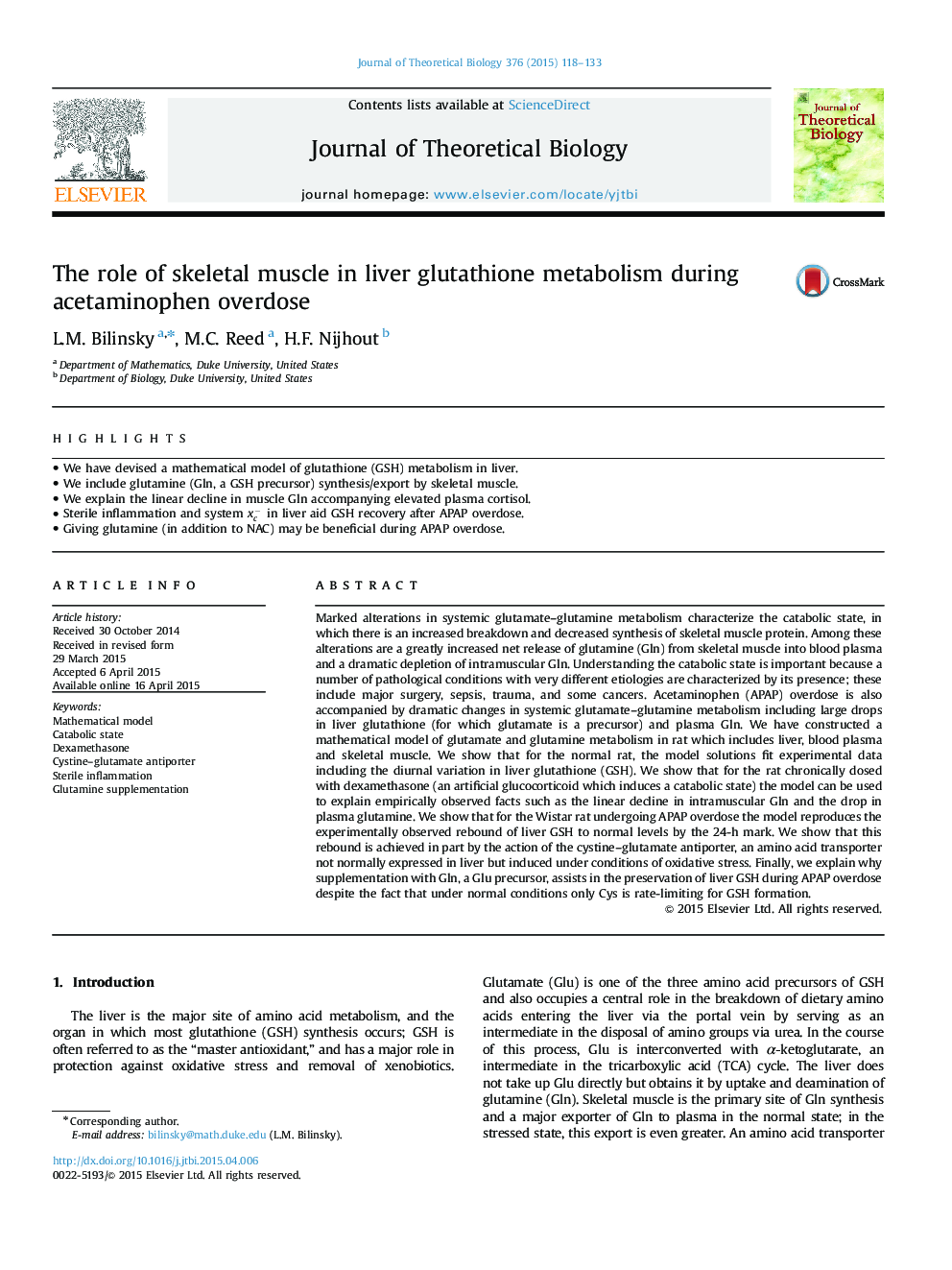| کد مقاله | کد نشریه | سال انتشار | مقاله انگلیسی | نسخه تمام متن |
|---|---|---|---|---|
| 4496043 | 1623834 | 2015 | 16 صفحه PDF | دانلود رایگان |
• We have devised a mathematical model of glutathione (GSH) metabolism in liver.
• We include glutamine (Gln, a GSH precursor) synthesis/export by skeletal muscle.
• We explain the linear decline in muscle Gln accompanying elevated plasma cortisol.
• Sterile inflammation and system xc− in liver aid GSH recovery after APAP overdose.
• Giving glutamine (in addition to NAC) may be beneficial during APAP overdose.
Marked alterations in systemic glutamate–glutamine metabolism characterize the catabolic state, in which there is an increased breakdown and decreased synthesis of skeletal muscle protein. Among these alterations are a greatly increased net release of glutamine (Gln) from skeletal muscle into blood plasma and a dramatic depletion of intramuscular Gln. Understanding the catabolic state is important because a number of pathological conditions with very different etiologies are characterized by its presence; these include major surgery, sepsis, trauma, and some cancers. Acetaminophen (APAP) overdose is also accompanied by dramatic changes in systemic glutamate–glutamine metabolism including large drops in liver glutathione (for which glutamate is a precursor) and plasma Gln. We have constructed a mathematical model of glutamate and glutamine metabolism in rat which includes liver, blood plasma and skeletal muscle. We show that for the normal rat, the model solutions fit experimental data including the diurnal variation in liver glutathione (GSH). We show that for the rat chronically dosed with dexamethasone (an artificial glucocorticoid which induces a catabolic state) the model can be used to explain empirically observed facts such as the linear decline in intramuscular Gln and the drop in plasma glutamine. We show that for the Wistar rat undergoing APAP overdose the model reproduces the experimentally observed rebound of liver GSH to normal levels by the 24-h mark. We show that this rebound is achieved in part by the action of the cystine–glutamate antiporter, an amino acid transporter not normally expressed in liver but induced under conditions of oxidative stress. Finally, we explain why supplementation with Gln, a Glu precursor, assists in the preservation of liver GSH during APAP overdose despite the fact that under normal conditions only Cys is rate-limiting for GSH formation.
Journal: Journal of Theoretical Biology - Volume 376, 7 July 2015, Pages 118–133
